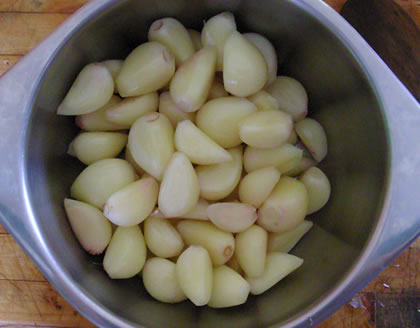You cannot readily get a heart attack or stroke as long as blood flows smoothly through your veins and arteries. Both heart attacks and strokes occur when blood vessels are clogged, which can lead to high blood pressure and the formation of blood clots. During a heart attack a clot blocks circulation in an artery supplying blood to the heart, thus damaging or destroying part of the heart. In a stroke, a blood clot stops blood supply to the brain depriving it of oxygen.
How can we prevent a blood clot that can result in a stroke or heart attack? And how can we assure the smooth flow of blood through our arteries and veins?
How Cardiovascular Disease Develops
Most commonly, cardiovascular disease arises out of two processes, atherosclerosis, or clogging of veins and arteries with cholesterol (fatty) and other metabolic and cellular waste ( plaque) deposits, combined with high blood pressure. This can result in the formation of blood clots that can cause strokes and heart attacks. For the process of vascular clogging to start, first a lesion in a blood vessels must occur. This allows a snag-hold for the plaque build up. As the blood vessels narrow, and blood pressure rises, the chance of blood clotting increases.
Excess Sugar and Animal Protein can Lead to Artery Clogging and Blood Clots
Researchers have found that too much sugar in our diet can lead to insulin resistance where sugar is not used adequately by the body, ending up in the blood stream and literally scratching and damaging the inner lining of arteries and veins. Lesions in the blood vessel lining can become snag-points for the accumulation of plaque, causing the narrowing of vessels, ultimately leading to blood clots that can result in a stroke or heart attack.
Protein, especially animal protein, notably from red meat, but also from chicken, pork, fish, eggs, cheese, when eaten in excess, in an unbalanced diet, may prompt an accumulation of homocysteine, a byproduct of the amino acid methionine. Excessive homocysteine in the blood damages arteries and veins by creating lesions on the interior of blood vessels. Researchers have found that excessive homocysteine has a corrosive effect on the arteries and veins, literally degrading and inhibiting the production of three essential components of blood vessels, collagen, elastin, and proteoglycans. Lesions caused by homocysteine facilitate plaque build-up, or fatty, LDL (bad cholesterol), calcium and cellular waste deposits in blood vessels, which, over time, cause atherosclerosis, hardening of the arteries, and high blood pressure. As the blood vessels narrow, blood clots can form, which can lead to a heart attack or stroke.
Vegetables, Fruit and Whole Grains to the Rescue! And Garlic!
The good news is that a diet rich in vegetables, including leafy greens, fruit and whole grains helps detoxify or regulate homocysteine in the blood. Both British and American scientists have found that Vitamin C can prevent homocysteine from damaging arteries and veins. Also, an adequate and balanced supply of the B vitamins (found, for example, in oatmeal, brown rice and whole grain wheat), folic acid, B6 and B12 in particular, is also essential to maintaing a balance in homocysteine blood levels. Additionally, potassium, found in bananas, beans, yogurt and spinach, among other fruits and vegetables, was linked to a reduced risk of stroke.
Reducing sugar to 6 teaspoons per day, as recommended by the American Heart Association, may also help reduce the risk of developing atherosclerosis and high blood pressure. On a recent Dr. Oz television show, the good doc placed sugar as the Number One food that should be “out of your house.” However, since removing table sugar from our diets seems impossible for the majority of people, the sensible course of action is limiting one’s intake of the now nefarious sweetener and increasing our diets with more detoxifying and health-giving vegetables, fruits and whole grains.
Garlic can Help!
Garlic can also be relied on to help. Garlic not only helps reduce cholesterol and fatty deposits in the arteries and veins, but also lowers blood pressure and thins blood to help lessen the chance of clotting. An adequate and always balanced diet, including garlic, and a sensible – never excessive – intake of sugar or protein, especially animal protein, can go a long way in preventing a heart attack and stroke.
Be Healthy! Eat Healthy! Eat Garlic (raw is best)!
Precautionary note:
A Mayo Clinic study found garlic’s blood thinning properties to be a risk to heart patients taking the anti-clotting drug Warfarin. The drug is frequently indicated for patients with heart-rhythm disorders, heart valve replacements, or who have suffered a heart attack.
